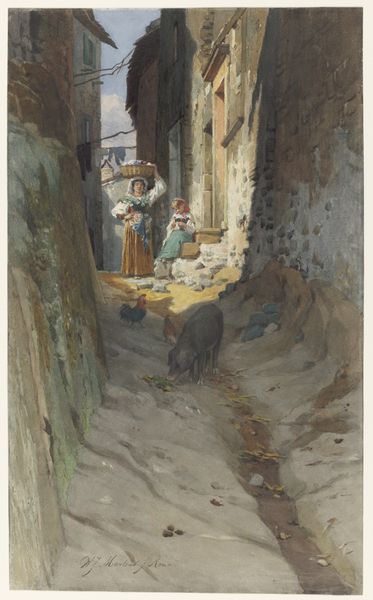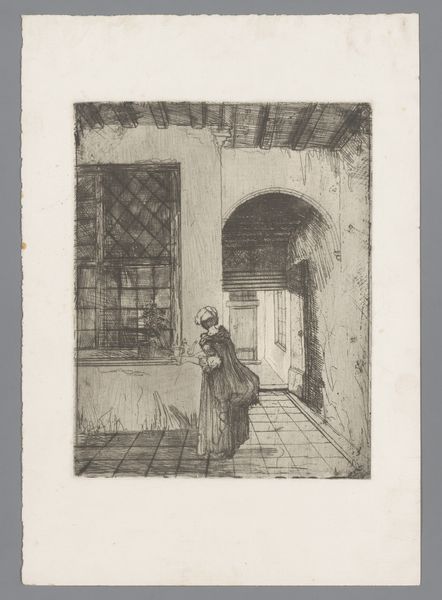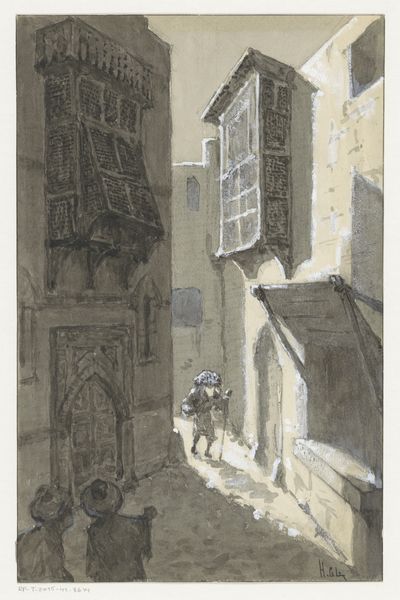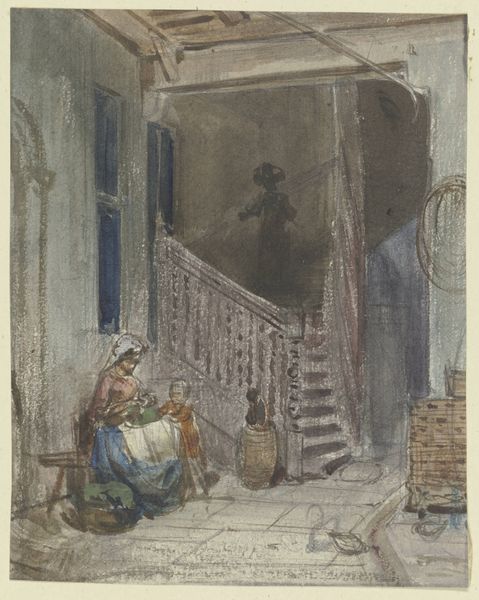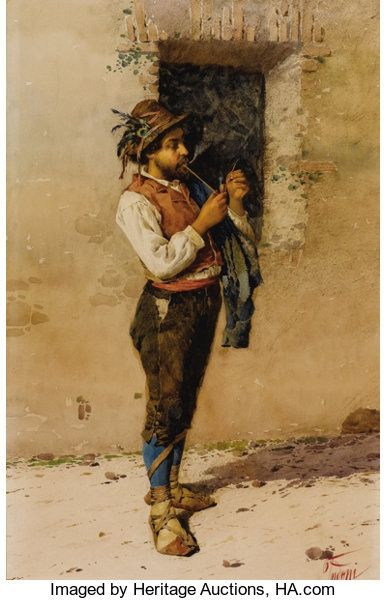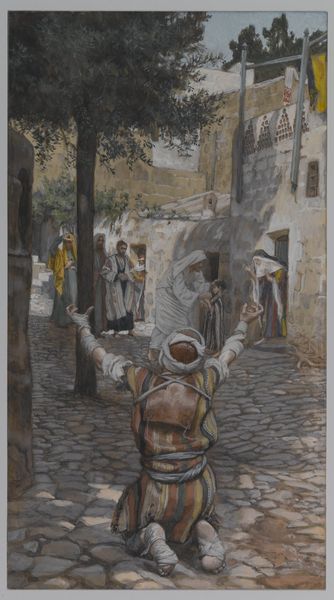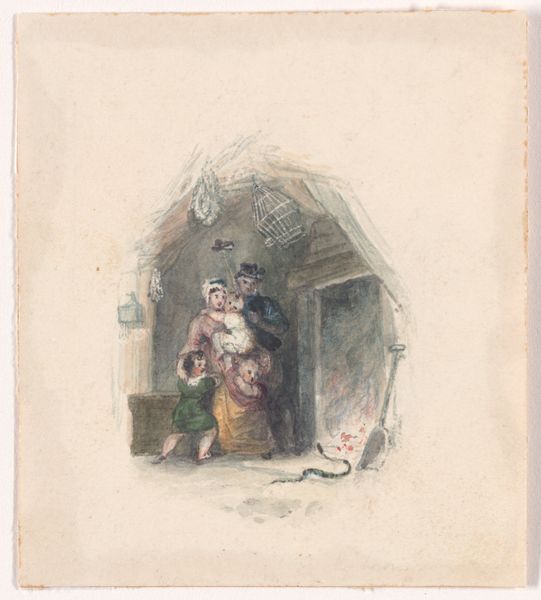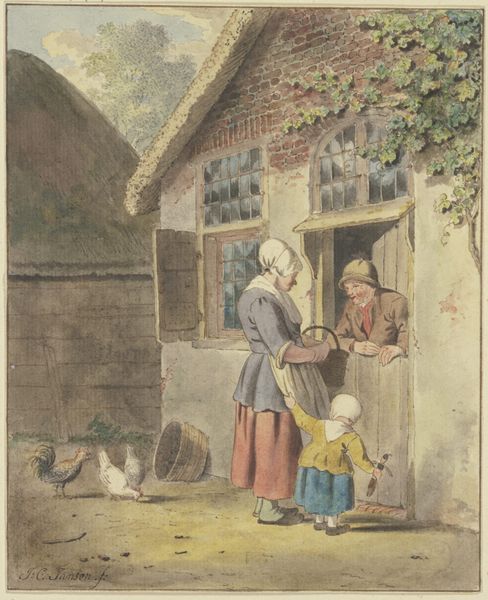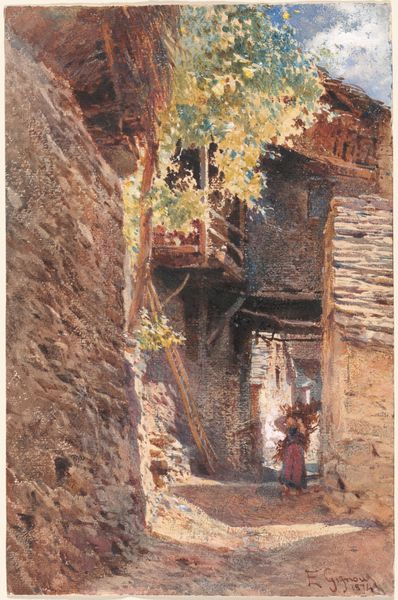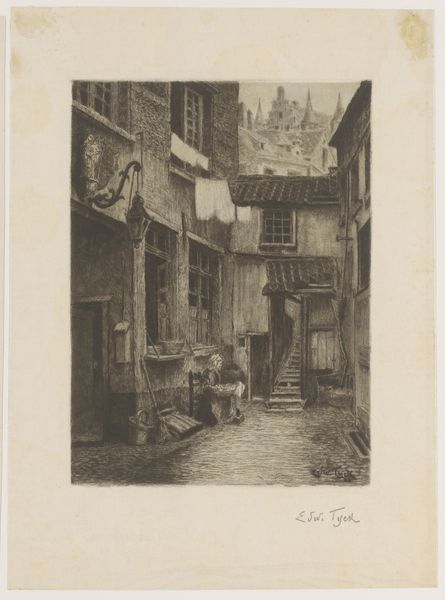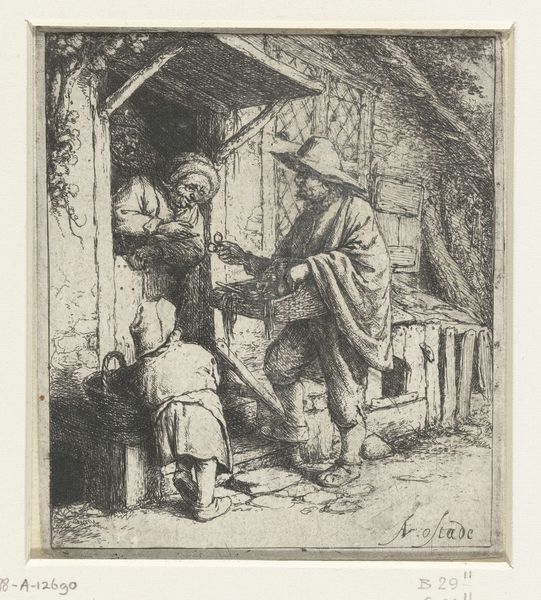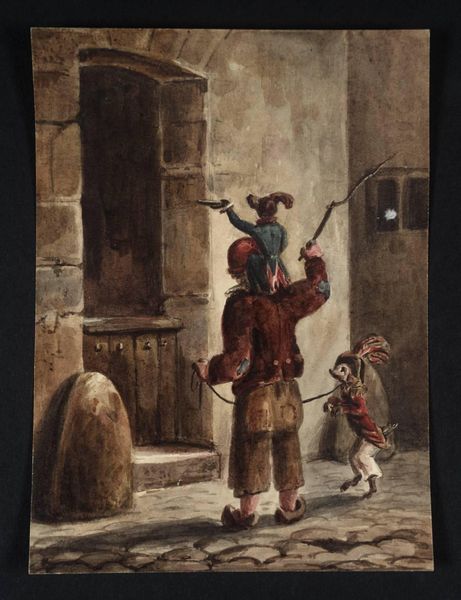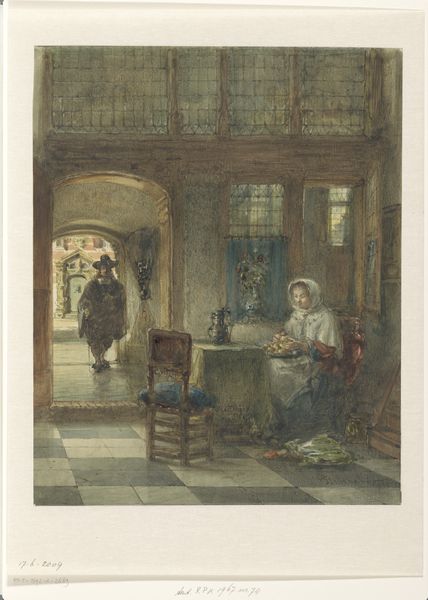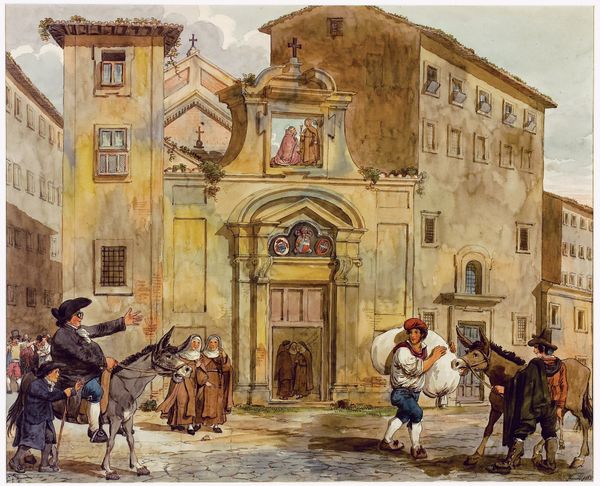
Dimensions: 19 1/2 x 12 3/4 in. (49.5 x 32.4 cm)
Copyright: Public Domain
Curator: What strikes me first about this piece is how solitary the figure seems within such a detailed architectural space. Editor: Indeed. We're looking at Alexandre-Louis Leloir's watercolor, "Wandering Minstrel; Old Nuremberg," dating roughly from 1843 to 1884. Leloir captured not just a man, but a moment brimming with socio-cultural implications. Curator: Precisely! Note the minstrel’s instrument; it represents cultural transmission, yet its placement, almost as a burden, tells a story of precarious survival. And the tavern sign above seems to promise something this individual is separate from. Editor: The historical context is key. Genre paintings like this gained popularity as they reflected the everyday lives and customs, appealing to the rising middle class who sought images mirroring their own experiences or fantasies of the past. Do you think Leloir idealizes the past here? Curator: It’s both idealizing and cautionary. The minstrel evokes the romantic allure of wandering artists, of tradition itself. However, the slightly drab palette and solitary nature contrast the celebratory associations—reflecting the societal position of those maintaining artistic tradition. Editor: So it's a nuanced portrayal. It's interesting how Leloir utilizes watercolor's fluidity to contrast textures: the solid stone buildings versus the almost ephemeral rendering of the minstrel himself. Curator: Absolutely, watercolor allows a blending of reality and imaginative sentiment. Leloir subtly imbues this character with almost dreamlike nostalgia, yet within the context of the very real, built environment. Editor: And the architecture almost overwhelms him, suggesting the limited space available to these figures in burgeoning cities. The rise of public entertainments displaced many traditional artists like him. Curator: Yes! And those shadows contribute a somber depth. He seems like an artifact swallowed by the new modernity around him. Editor: So, it's a painting that invites contemplation about art's place amidst broader social transformations. Quite a relevant theme today, wouldn’t you agree? Curator: A poignant representation of the complex relationship between tradition and progress—still resonating through cultural memory.
Comments
No comments
Be the first to comment and join the conversation on the ultimate creative platform.
